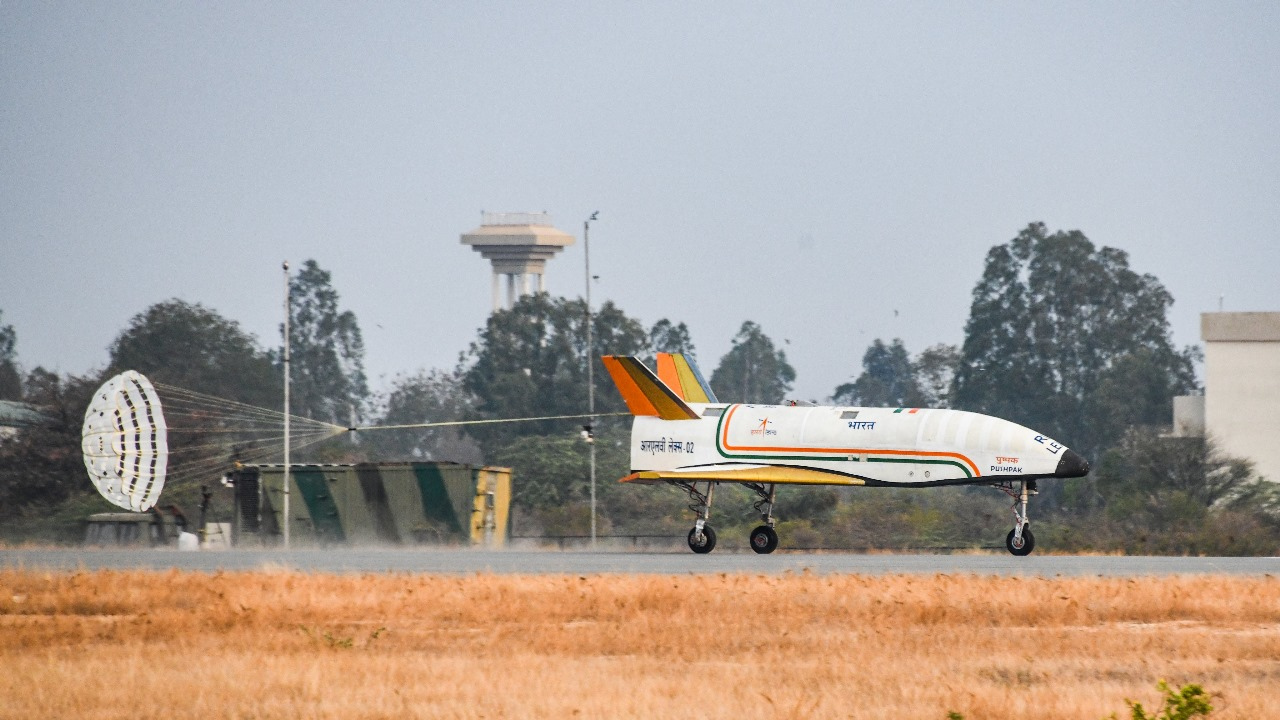
Isro’s Reusable Launch Vehicle completes 3rd landing test, paving way for orbital re-entry | India News
BENGALURU: Isro, which had, on March 22 completed the second landing experiment of its reusable launch vehicle (RLV) — “RLV-LEX-02” — Sunday conducted the third landing experiment (RLV-LEX-03), paving the way for an orbital re-entry test.
The test was conducted at the Aeronautical Test Range (ATR) at Challakere in Chitradurga district, some 220km from Bengaluru.The RLV project is an important programme that will demonstrate one of the technologies needed to meet India’s ambitions of sustained human presence in space.
The RLV-LEX-03, built upon RLV-LEX-02, was aimed at improving the vehicle’s performance, guidance, and landing capabilities.
TOI had reported last week that, weather permitting, Isro would attempt to achieve this milestone in the development of RLV technology this week.
S Unnikrishnan Nair, director, Vikram Sarabhai Space Centre (VSSC), which has developed the RLV, had told TOI that compared to the previous LEX, Nair said, RLV-LEX3 will be more challenging as the “intentional cross-range error of around 500m will be tested, compared to around 150m during LEX-02.
“The velocity azimuth with respect to the runway centre was adjusted to 2°, deviating from the previous mission’s 0° alignment,” he said.
The mission had another advancement: Implementation of an advanced guidance algorithm that can simultaneously correct errors in both the longitudinal and lateral planes. This decoupled algorithm, an improvement over LEX-02’s approach, will be utilised to enhance the reusable launch vehicle’s precision and control.
Also, to ensure a softer landing and reduce touchdown loads, the main landing gear (MLG) sink rate was reduced to less than 1m/second, compared to the 1.5m/second limit during LEX-02. Additionally, a smoke marker system has been introduced to trace the descent trajectory, providing visual data for analysis and future improvements.
The space agency also evaluated the performance of its real-time kinematics (RTK) system in a high-speed environment. This system is crucial for future landing missions, as it can enhance the robustness of the hybrid navigation system, ensuring accurate and reliable guidance.
The test was conducted at the Aeronautical Test Range (ATR) at Challakere in Chitradurga district, some 220km from Bengaluru.The RLV project is an important programme that will demonstrate one of the technologies needed to meet India’s ambitions of sustained human presence in space.
The RLV-LEX-03, built upon RLV-LEX-02, was aimed at improving the vehicle’s performance, guidance, and landing capabilities.
TOI had reported last week that, weather permitting, Isro would attempt to achieve this milestone in the development of RLV technology this week.
S Unnikrishnan Nair, director, Vikram Sarabhai Space Centre (VSSC), which has developed the RLV, had told TOI that compared to the previous LEX, Nair said, RLV-LEX3 will be more challenging as the “intentional cross-range error of around 500m will be tested, compared to around 150m during LEX-02.
“The velocity azimuth with respect to the runway centre was adjusted to 2°, deviating from the previous mission’s 0° alignment,” he said.
The mission had another advancement: Implementation of an advanced guidance algorithm that can simultaneously correct errors in both the longitudinal and lateral planes. This decoupled algorithm, an improvement over LEX-02’s approach, will be utilised to enhance the reusable launch vehicle’s precision and control.
Also, to ensure a softer landing and reduce touchdown loads, the main landing gear (MLG) sink rate was reduced to less than 1m/second, compared to the 1.5m/second limit during LEX-02. Additionally, a smoke marker system has been introduced to trace the descent trajectory, providing visual data for analysis and future improvements.
The space agency also evaluated the performance of its real-time kinematics (RTK) system in a high-speed environment. This system is crucial for future landing missions, as it can enhance the robustness of the hybrid navigation system, ensuring accurate and reliable guidance.
